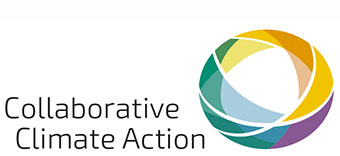Higher NDC Ambition through Collaborative Climate Action
Event Summary
At the end of January, GIZ successfully hosted a event focusing on “Higher NDC-Ambition through Collaborative Climate Action”. In the hour-long event, three speakers from different contexts presented insights on their understanding of the potential for collaborative climate action.
At the outset, Judith Voss-Stemping and Petter Lydén introduced the project Climate Policy Meets Urban Development and explained its understanding of Collaborative Climate Action. They also outlined the project’s activities such as knowledge products and regional activities in South Africa and Mexico.
Thibaud Voïta, Head of Knowledge Products at the NDC Partnership, then took over and explained how to best engage subnational governments in climate action. By involving them in the process of national climate policy design, an awareness and especially a sense of ownership for NDC implementation can be created. Furthermore, the local and regional level is important in improving information flows, for example by tracking local emissions and by identifying local champions. While Voïta stressed that no one-size-fits-all-approach of engaging subnational governments in climate action exists, the first step is to organize consultations so that different levels of government can better understand each other’s needs.
Jakob Lindemann, former advisor with the project Vertically Integrated Climate Policies (VICLIM) at GIZ gave insights into the ways in which VICLIM supported the NDC-preparation in Georgia, Costa Rica and Mexico. Giving an overview of the framework conditions present before the NDC-publication, Lindemann showed how the subnational level was supported in becoming engaged in NDC preparation.
Yuriana González, advisor in the GIZ project Mexican-German Climate Change Alliance, illustrated in detail a monitoring system of climate action at the subnational level. From its inception to full implementation, González outlined the steps of setting up the system, stressing the active participation of the local level.
Participants then asked around 10 questions in a Q&A session, to which the speakers responded.
A recording of the full event is available below:

